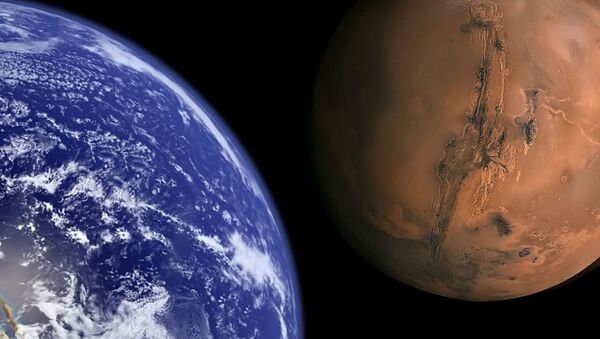WASHINGTON (Sputnik) — A human being could be sent to Mars within one or two decades if the US public supports the endeavor, NASA astronaut Terry Virts said on Monday.
"Actually getting to Mars… it could be done in a decade or two," Virts said at a National Press Club event.
The success of the endeavor, however, "is more a question of political science, than it is rocket science," Virts added.
Under the US National Space Policy of 2010, the National Aeronautics and Space Agency (NASA) is developing the capabilities needed to send humans to Mars in the 2030s.
In June, Virts returned from an approximately six month tour on the International Space Station (ISS), where a team of international astronauts are conducting experiments to better understand the many requirements for human travel in deep space.
Terry Virts also stated that international cooperation is required to successfully carry out a manned mission to Mars.
"Personally, I think that we won’t go to Mars unless it is international," Terry said in a speech at the National Press Club of the next great human space endeavor.
During a recent 199 day tour on the ISS, Virts and other international astronauts conducted a series of experiments to advance NASA’s journey to Mars, planned to take place in the 2030s.
Virts explained that he believes international collaboration on a Mars mission "is mandatory," because of funding challenges and the difficulties of one country having "the political will to stick to a project for several decades."
The other great advantages of international collaboration on a Mars voyage include the "efficiencies" gained when different countries are contributing, so one nation does not have the shoulder the entire program itself, Virts claimed.
Another astronaut, Mark Kelly, stated that the ability to go to Mars is not based on technology and engineering challenges.
"The limiting factor, and the thing that really controls when we actually do this [go to Mars], is the public desire to do it," Kelly stated.
Sending humans to Mars will be costly and will take a long time to achieve, Kelly noted. "Without the public support it won’t happen."
Mark Kelly is currently part of a ground-breaking study with his twin brother, NASA Astronaut Scott Kelly, who will be on the International Space Station for nearly one year to better determine the long-term effects of microgravity on the human body. Scott Kelly will be in space for 340 days, the longest time a human being has ever lived outside of Earth.



